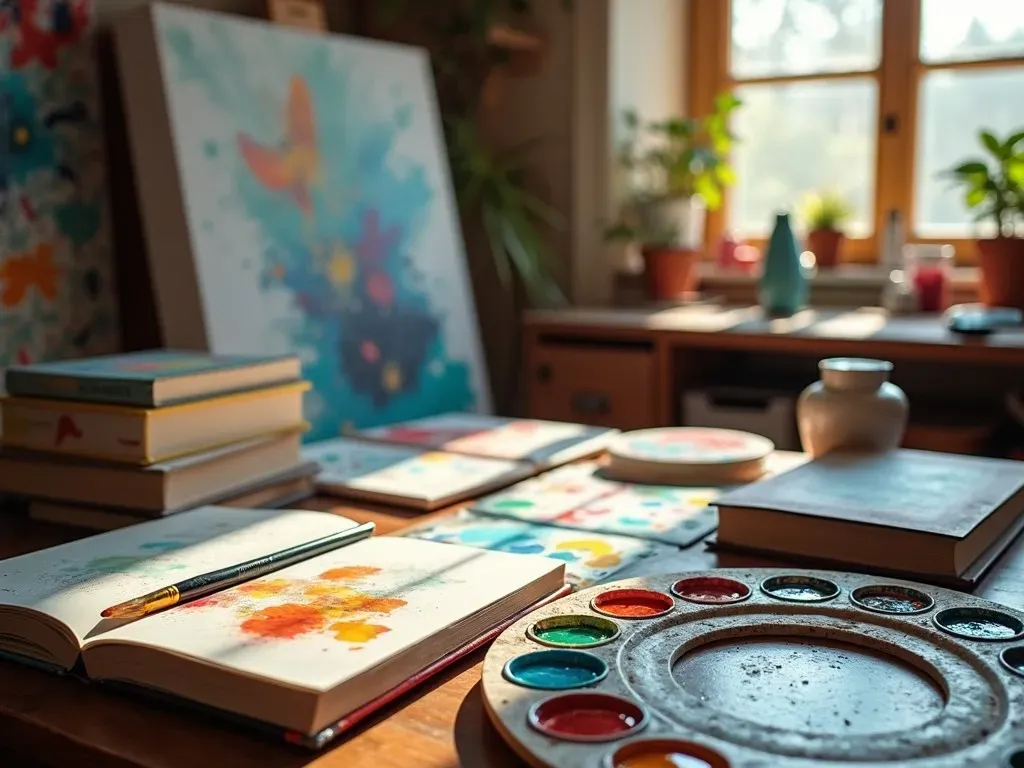Oil painting Techniques are an integral part of the artistic journey, enabling both beginners and experienced artists to create mesmerizing works of art. From glazing to impasto, mastering these techniques can significantly enhance your creative output. This article delves deep into various oil painting techniques, offering valuable tips and guidance, along with attention to detail for those keen to elevate their painting skills.
1. Understanding the Basics of Oil Painting
Oil painting, a method that uses pigments suspended in oil, typically linseed, has been a staple in the art world for centuries. Its versatility and rich texture allow artists to express their creativity vivid and compellingly. The following are some essential oil painting techniques widely used among artists.
2. Key Oil Painting Techniques
| Technique | Description | Effect |
|---|---|---|
| Glazing | Applying thin, transparent layers of paint to create depth and luminosity. | Creates a glowing effect and adds complexity to colors. |
| Impasto | Applying thick layers of paint with a palette knife or brush, allowing for texture. | Adds dimension and a three-dimensional appearance to the painting. |
| Scumbling | Applying a layer of lighter, opaque paint over a dry layer. | Produces a broken color effect and adds vibrancy. |
| Alla Prima | Painting wet on wet without allowing previous layers to dry. | Ideal for fast execution and spontaneous expressions. |
| Underpainting | Creating a base layer with monochrome or tinted paint. | Establishes the composition and tonal values early on. |
3. Specialized Techniques
In addition to the fundamental methods, artists also utilize several specialized techniques to achieve specific visual effects:
- Chiaroscuro: The use of strong contrasts between light and dark to create a sense of volume.
- Sfumato: A technique that produces soft transitions between colors and tones.
- Pointillism: Using small dots of color to create dynamic imagery, which appears unified from a distance.
4. Supplies Needed for Oil Painting
| Item | Purpose |
|---|---|
| Oil Paints | The primary medium for creating artwork. |
| Palette | For mixing colors. |
| Brushes | Different sizes for varied stroke effects. |
| Palette Knives | For mixing and applying paint in a thick manner. |
| Canvas or Wood Panels | Surface to paint on. |
| Linseed Oil | Medium to thin out paint and increase fluidity. |
| Solvents (like turpentine) | For cleaning brushes and thinning paints. |
5. Tips for Painting with Oil Paint
- Choose the right medium: Different mediums can alter the drying time, sheen, and texture.
- Work in layers: Allow each layer to dry before applying the next; this builds depth and complexity.
- Use the right brush technique: Experiment with different holds and brushes to find what suits your style.
6. Advanced Oil Painting Methods
For painters seeking to refine their skills further, the following methods are highly regarded:
- Blocking in: Laying down large areas of color to establish a composition before refining details.
- Wet-on-wet: Painting over wet paint to blend colors directly on the canvas.
- Dry brushing: Using a dry brush to apply paint for an uneven texture and enhanced detail.
7. Common Mistakes and How to Avoid Them
| Mistake | Solution |
|---|---|
| Painting too thickly from the start. | Start with a loose, thin layer and build up slowly. |
| Lack of planning in composition. | Sketch the layout lightly on the canvas first. |
| Neglecting color mixing basics. | Practice mixing colors and creating a swatch sheet. |
8. Studying Famous Artists and Their Techniques
Understanding how historical artists approached oil painting can offer invaluable insights. The following artists are notable for their distinctive oil painting techniques:
- Vincent van Gogh: Known for his expressive use of impasto and vibrant colors.
- Rembrandt: Mastered chiaroscuro, using light contrast dramatically in his portraits.
- claude monet: Pioneered plein air painting using quick brushstrokes and layers of color.
9. FAQs About Oil Painting Techniques
Q1: Can I use oil paints on paper?
Yes! You can use oil paints on specially prepared paper designed for oil painting, but traditional canvas gives better results.
Q2: How do I clean my oil painting brushes?
Use a solvent like turpentine or mineral spirits followed by soap and water to clean your brushes effectively.
Q3: What is the difference between professional and student-grade oil paints?
Professional-grade paints have higher pigment concentrations and better durability compared to student-grade, which may have fillers and less vibrancy.
10. Learning Resources
For artists wanting to dive deeper into oil painting techniques, numerous resources are available:
- ArtIgnition: A comprehensive reference on mastering oil painting techniques. Visit Here
- Fine Art Tutorials: Offers various methods and exercises for beginners and advanced painters. Visit Here
Mastering oil painting techniques is a rewarding endeavor that allows for endless creative possibilities. By experimenting and continuously practicing these methods, both new and experienced artists can enhance their craft and unlock new levels of artistic expression. Happy Painting!
